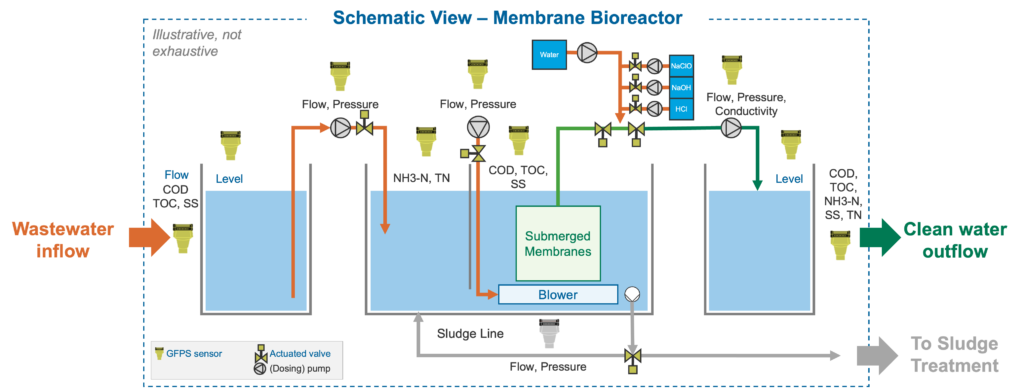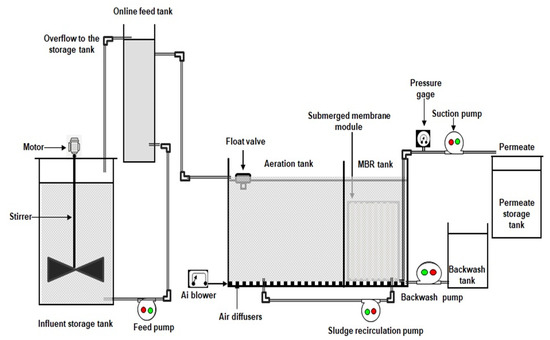Exploring the Environmental Impact of Membrane Bioreactor in Wastewater Treatment
Exploring the Environmental Impact of Membrane Bioreactor in Wastewater Treatment
Blog Article
The Benefits of Membrane Bioreactors in Sustainable Wastewater Administration
Membrane layer bioreactors (MBRs) stand for a crucial advancement in sustainable wastewater management, efficiently merging biological treatment with advanced membrane filtering innovation. This combination not just improves effluent high quality by successfully getting rid of impurities yet additionally opens up opportunities for water reuse in different applications, therefore attending to the pushing requirement for resource conservation. Furthermore, the compact design of MBRs adds to substantial decreases in environmental impact and operational prices. As the need for lasting options heightens, exploring the multifaceted advantages of MBRs may reveal unanticipated effects for the future of wastewater treatment systems.
Review of Membrane Bioreactors
Membrane layer bioreactors (MBRs) represent a significant innovation in wastewater treatment modern technology, integrating organic deterioration with membrane layer filtering to boost the effectiveness of the therapy process. This cutting-edge system combines the advantages of standard triggered sludge procedures with membrane innovation, permitting enhanced solid-liquid splitting up. MBRs utilize semi-permeable membrane layers to different treated water from biomass, resulting in high-grade effluent that can be reused or securely released into the atmosphere.
The functional design of MBRs normally entails a bioreactor where microorganisms break down natural issue, followed by a membrane device that filterings system the mixed liquor. This arrangement not just minimizes the footprint of the therapy center yet also enables greater biomass focus and lowered hydraulic retention times. MBRs are capable of treating a broader variety of impurities, consisting of nutrients and pathogens, making them suitable for different applications, from local wastewater therapy to commercial effluent handling.
The assimilation of MBRs right into wastewater monitoring systems is a measure of an expanding pattern in the direction of effective and sustainable methods in environmental engineering. Their ability to generate high-quality effluent while minimizing space requirements placements MBR modern technology as a principal in modern-day wastewater treatment services.
Enhanced Effluent Quality

The membrane layer purification procedure works as a physical obstacle, allowing the retention of microbes and particulate matter, which contributes to a more clear and cleaner effluent (Membrane Bioreactor). In addition, MBRs operate at higher biomass focus than conventional activated sludge systems, advertising more reliable biodegradation of contaminants. This results in a decrease in biochemical oxygen demand (FIGURE) and overall suspended solids (TSS) degrees in the final effluent
Furthermore, MBRs demonstrate exceptional performance in treating challenging wastewater structures, such as industrial effluents and wastewater with high nutrient lots. Consequently, the effluent generated is commonly of higher top quality, enabling even more versatile disposal alternatives and minimized ecological effect. Inevitably, the enhanced effluent top quality achieved with MBR modern technology highlights its critical function in progressing sustainable wastewater administration practices.
Water Reuse Opportunities
The top notch effluent produced by membrane layer bioreactors (MBRs) opens significant chances for water reuse in numerous applications. MBRs effectively get rid of contaminants, including microorganisms, put on hold solids, and organic matter, leading to cured water that meets or exceeds regulative criteria for reuse. This quality allows for the application of water reusing initiatives across varied fields.
One popular application remains in farming, where treated wastewater can be utilized for irrigation, promoting sustainable farming methods while conserving fresh water sources. In addition, MBR-treated effluent can be made use of for commercial procedures such as air conditioning, cleansing, and as a procedure water resource, dramatically lowering the need for safe and clean go to the website water in these my link procedures.
In city settings, MBRs promote the usage of redeemed water for landscape watering, commode flushing, and various other non-potable uses, adding to the overall resilience of supply of water systems. Additionally, the integration of MBR innovation in decentralized systems help in handling localized water demands, particularly in water-scarce areas.
Reduced Ecological Effect
Just how can the adoption of membrane layer bioreactors (MBRs) add to a decreased ecological impact in wastewater monitoring? MBRs dramatically enhance the therapy effectiveness of wastewater while lessening eco-friendly disturbances. Membrane Bioreactor.
Moreover, MBRs operate at lower hydraulic retention times contrasted to conventional systems, leading to smaller sized treatment plant impacts. This portable design minimizes land usage, thus protecting all-natural habitats and biodiversity. The process additionally generates less sludge than standard approaches, reducing disposal difficulties and lowering greenhouse gas emissions connected with sludge administration.
In addition, MBRs assist in the recuperation of valuable resources, such as water and nutrients, adding to a round economy. By enabling water reuse for irrigation or industrial processes, MBRs assist relieve freshwater scarcity, thus promoting sustainable water utilize methods. Eventually, the fostering of MBR modern technology stands for a substantial stride towards minimizing the environmental impact of wastewater management systems.
Economic Advantages of MBRs

Furthermore, MBRs help with the manufacturing of high-quality effluent, which can be reused for numerous applications, such as farming watering and industrial processes - Membrane Bioreactor. This reuse capability can significantly decrease water purchase prices, supplying a monetary incentive for industries facing rigorous water guidelines
The small design of MBR systems also causes minimized land demands, which is particularly valuable in city areas where realty is pricey. By decreasing area, sectors and towns can save on land procurement and maintenance expenses.
In addition, MBRs typically require much less regular maintenance and have a longer life expectancy than conventional systems, better adding to cost financial savings. In summary, the financial advantages of MBRs-- varying from decreased functional costs to land financial savings and effluent reuse-- make them a compelling selection for sustainable wastewater monitoring, providing both lasting and immediate economic benefits.
Verdict
In addition, MBRs add to lowered ecological influences via portable layouts and reduced sludge generation. Economic benefits better boost their stability, making MBRs an encouraging remedy for resolving the obstacles of wastewater therapy and promoting sustainable resource management.
Membrane layer bioreactors (MBRs) stand for a crucial innovation in lasting wastewater administration, efficiently merging organic therapy with advanced membrane filtration technology.Membrane layer bioreactors (MBRs) stand for a significant advancement in wastewater therapy modern technology, integrating biological destruction with membrane layer filtering to enhance the performance of the therapy process.Attaining boosted effluent high quality is one of the most significant benefits of utilizing membrane bioreactors (MBRs) in wastewater therapy.Furthermore, MBRs show exceptional performance in dealing with difficult wastewater compositions, such as commercial effluents and wastewater with high nutrient loads.Incorporating membrane bioreactors (MBRs) into wastewater monitoring not only lowers environmental impact yet also offers considerable financial advantages.
Report this page